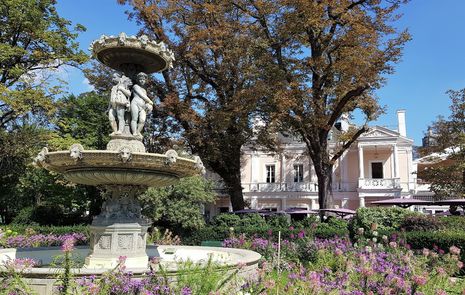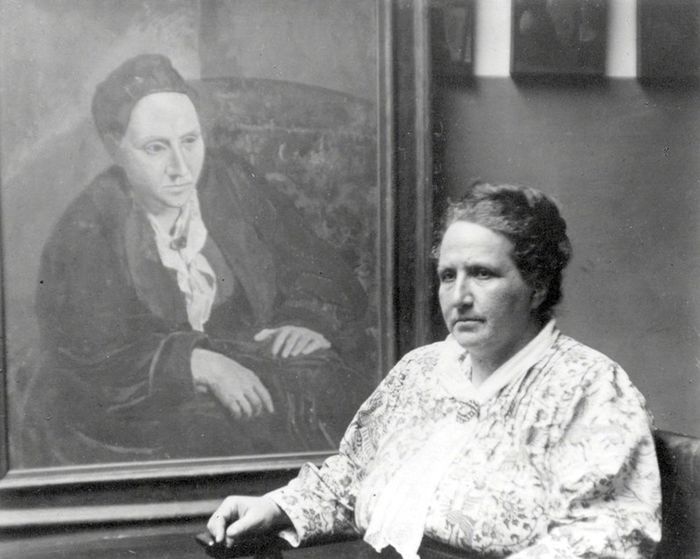Dream Spaces and Dancing girls
Archie Hamerton discusses the disquieting dynamic between Adolf Loos and his chosen muse, Josephine Baker

Of all the people enchanted by Josephine Baker when she emerged on the stage of the Théâtre des Champs-Elysées in 1925, Adolf Loos’ infatuation with the nineteen-year-old provides the most troubling example of the relationship with the muse. Like Cocteau, Matisse, and the many other adoring artists fascinated by her, Viennese architect Loos was obsessed with the voyeuristic potential of her exoticism – an idea that now smacks of both the male gaze and racial fetishisation. Loos produced designs for a house for Baker, a blueprinted cross between an aquarium and a prison; it would never be built, however, was thereafter confined to the Bachelardian realm of the symbolic dream-space. This monochrome house – made up of receiving and entertaining rooms as well as a now infamous central stage-space in the form of a glass-walled, viewable pool – underlines the voyeuristic fascination with Baker, one that is tricky not to read as a warping of the modernist understanding of the muse.
In her dramatic criticism, Woman’s Theatrical Space, Hanna Scolnicov identifies the paradoxical space of the staged feminine room; when we see the interior as the woman’s space –from Penelope’s weaving closet to Hedda Gabler’s drawing room – the act of staging it makes its very existence antithetical, at once private and public. The Baker-Loos house is this paradox incarnate, its intimate centre replaced by a veritable Bentham’s panopticon. In the four floor house Loos proposed the installation of a double height swimming pool, top lit and glass plated so as to be visible to visitors in the surrounding salons and entertaining rooms. Baker, a proficient and keen swimmer, would perform for her guests, lit ethereally from the top and as liquidly pellucid as the house’s jagged geometry. Strange how an American dancer and a Viennese architect capture the essence of German expressionism so succinctly.
Yet despite the building’s watery core, there remains nothing oneiric about Loos’ proposal – nothing organic or fluid, no sense of home, no sense even of a house. If Bachelard’s house rises from the earth like a ‘stone plant’, its bedchamber a seedpod and the entire space of the home growing outward from that intimate centre, then Loos’ is the opposite. It comes from the external inward: the walls bear a graphic black and white striped pattern reminiscent of all things oppressive, from the arrowed stripe on a prisoner’s jumpsuit to the unreasoning ink of a censor’s strike. In fact the pool itself recalls the one-way window of a prison’s execution chamber, recreating that suffocating movement inward, a horizontal constriction. Its celebration (its prioritisation, even) of the outside gaze means the compact and intimate centre (here a public, not private space) comes from the exterior, shaped by its walls and watchers; it is not an organic blooming from its ‘enclosed seed’.
“Her privacy, then, is a performance, and her house little more than a stage”
The importance of the gaze in this unbuilt home, an ‘unbuilding’, if you will, is as integral to its architectural character as the marble walls and unlaid foundations. It is a space built by and for watching: its inhabitant, client, and muse was intended to perform even in her private space. Her privacy, then, is a performance, and her house little more than a stage. It is notable here that Cocteau chose Baker as a muse of sorts, designing theatrical sets for her not unlike the house that Loos dreamed of. It is perhaps more notable that in his Moller and Müller houses Loos installed what Colomina calls ‘theatre boxes’, inviting theatrical sight into the private sphere.
Clearly the line between performance-watching and voyeurism is blurred, particularly when we note the power imbalance. Does viewing Baker as Loos’ client rather than his muse give her more power? Does her command over white audiences and artists give her a means of entering high society, or does it simply make her a token piece of exotica? Is the ownership of a space so centrally dedicated to her performance and body an example of ‘taking up space’, or is it a structure that makes concrete the otherwise abstract idea of her oppression? It becomes impossible not to read the geometric black and white stripes of the house’s façade in racial terms, a diametric integration. It is not just a faintly ugly architectural allusion to prison garb, but an uncomfortable allusion to Baker herself – a self-made Black woman mixing with, inspiring, and entertaining white artists and audiences – ‘infiltrating’ white society. The building becomes body, the schematic becomes skin. The central swimming pool, designed for its inhabitant to be watched, is a prime example of Loos portraying Baker – already famed for her banana leaf skirts and vague-Africana image – as something zoological, fetishistic, to be consumed. The design of this imposing and powerful marble monument to the consuming gaze – that of the white man, that of the artist – in turn strips her of her own power. Such is the curse of the muse.
 News / SU reluctantly registers controversial women’s soc18 December 2025
News / SU reluctantly registers controversial women’s soc18 December 2025 Features / Should I stay or should I go? Cambridge students and alumni reflect on how their memories stay with them15 December 2025
Features / Should I stay or should I go? Cambridge students and alumni reflect on how their memories stay with them15 December 2025 News / Dons warn PM about Vet School closure16 December 2025
News / Dons warn PM about Vet School closure16 December 2025 News / Cambridge study finds students learn better with notes than AI13 December 2025
News / Cambridge study finds students learn better with notes than AI13 December 2025 News / Uni registers controversial new women’s society28 November 2025
News / Uni registers controversial new women’s society28 November 2025










